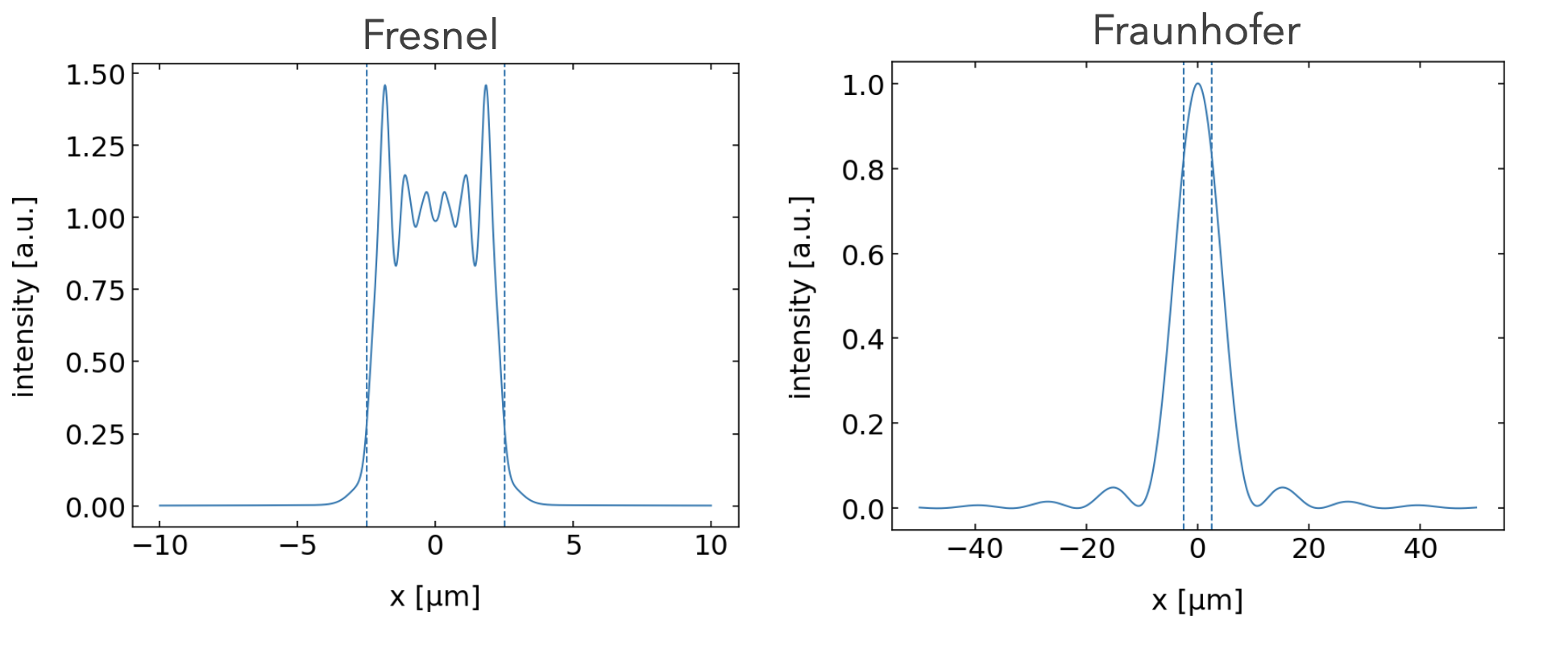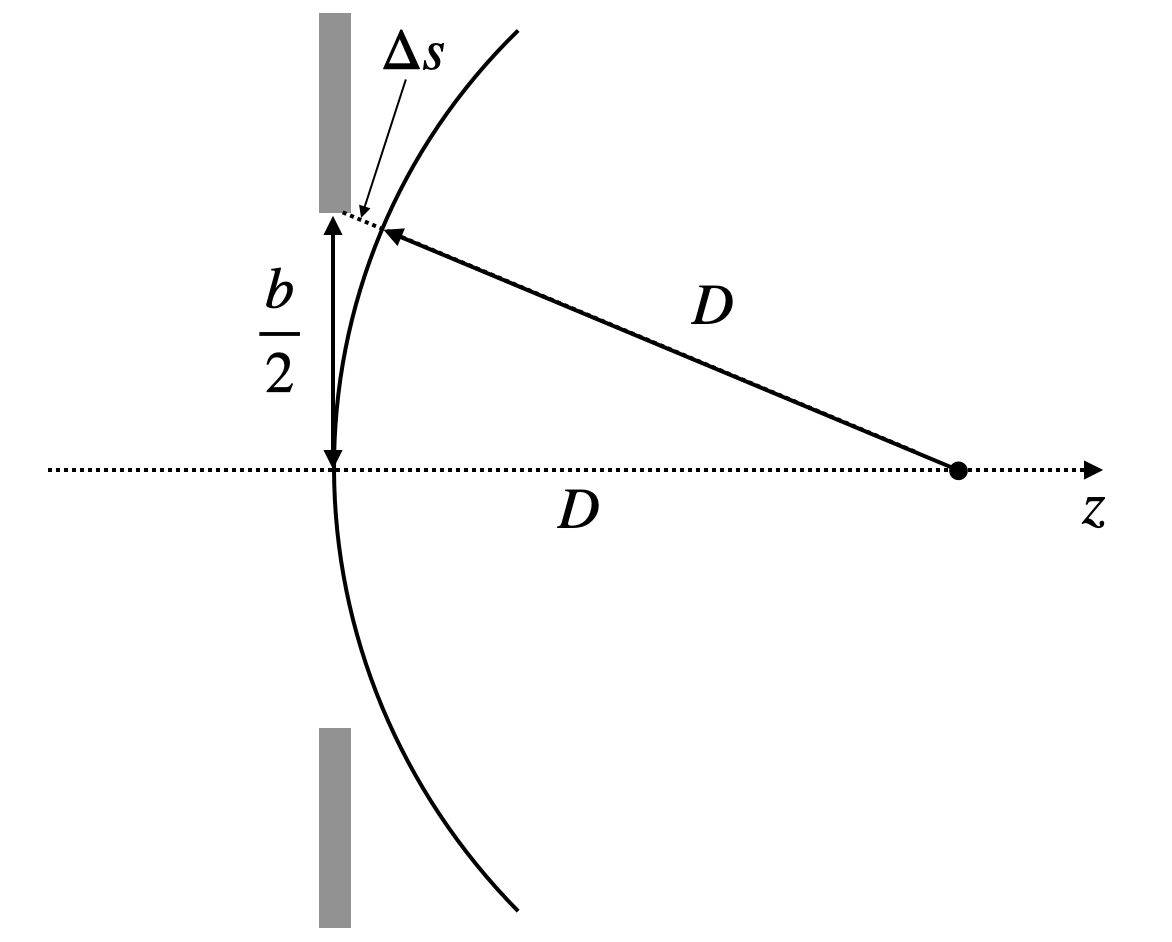This page was generated from `/home/lectures/exp3/source/notebooks/L12/Diffraction Integral.ipynb`_.
Diffraction Integral¶
In the last section about Fresnel zones and the zone plate we have considered how different path contribute to the intensity at a point on the optical axis. We would like to generalize this idea to an integral formulation allowing us to calculate any kind of diffraction pattern.

Fig.: Diffraction integral.
Assume we have a light source
where
and
This is the amplitude of the Huygens wave, which eminates from the point
with
The total amplitude at the point
with
Fresnel Approximation¶
The diffracion integral does not always need to be calculated in completely, but we may use approxaimations to obtain diffraction patterns in different regimes. The first approximation, we would like to have a short look at is the Fresnel approximation, which yields the diffraction pattern in the near field.
The distance
The second line assumes that
As the integration is over
This is the Fresnel approximation.
Fraunhofer Approximation¶
If we further assume that the aperture is small as compared to the distance at which we observe the diffraction pattern, we can further simplify the Fresnel approximation to yield the Fraunhofer approximation giving the diffraction patter in the far field. The condition is
In this case we can neglect the term
which results in

Fig.: Diffraction pattern of a slit in the near field (Fresnel diffraction, left) and the far field (Fraunhofer diffraction, right).
While these formulas provide the mathematical tools, we may obtain a more intuitive idea about the different approximation in the following way. Consider the image below, where we would like to know about the diffraction intensity of a slit of width

Fig.: Illustration of the importance of additional geometrical path length difference for the discrimination of Fresnel (near-field) and Fraunhofer (far-field) diffraction.
The waves from the center of the slit and the edge have to travel towards that point a different pathlength, whcih we may calculate to
We may develop the square root into a Taylor series and obtain
The second order correction term
or
to be fullfilled to be in the far field.
This number
Babinet’s Principle¶
The above considerations of diffraction have some intruiging consequence. Consider the two apertures in the image below.

Fig.: Two complementary apertures, which have the same diffraction pattern in the far field.
The left aperture will create in the far field an amplitude distribution
In the case when we have two complementary apertures, that total amplitude has to be zeor, when hole and dot are placed at the same position. We therefore obtain
and therefore
This is the Principle of Babinet which states:
Babinet’s Principle
The far field diffraction intensity distribution of complementary apertures is the same.
The images below show an experimental demonstration of Babinet’s principle on a slit and a wire.

Fig.: Babinet’s principle demonstrated experimentally on a slit (left) and a wire (right).
